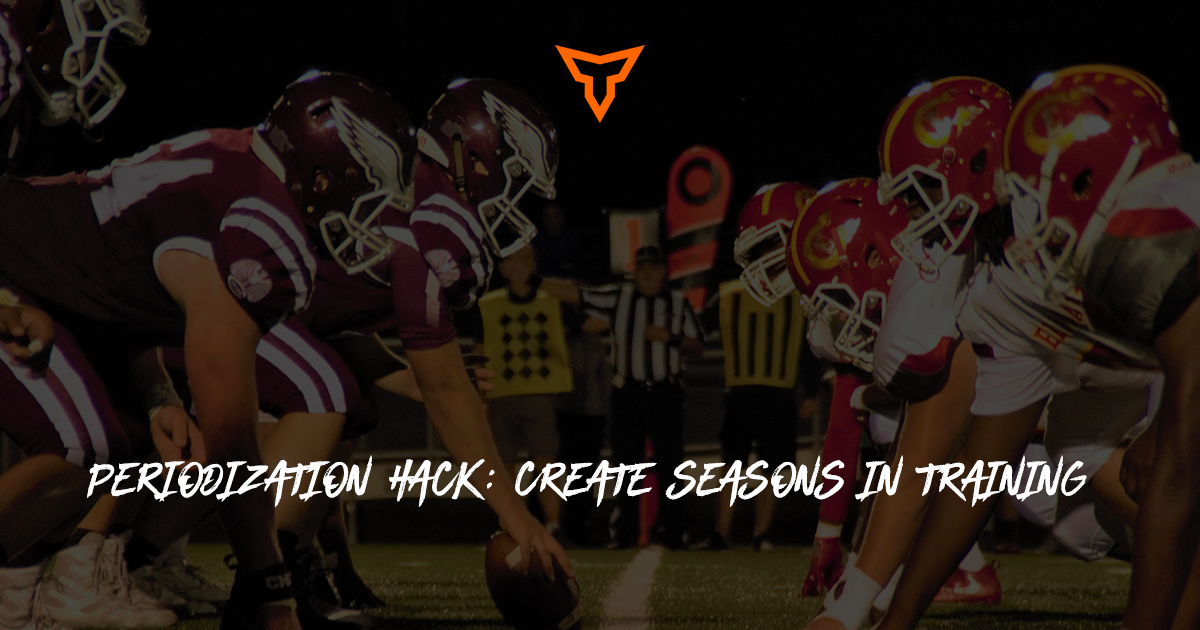Things I Wish I Knew Before Going TSAC: Part 3
As the tactical strength and conditioning field expands and improves S&C coaches must share knowledge outside of programming to ensure the success of our contracts, industry, and tactical athletes. Expanding on my previous articles “Things I Wish I Knew Before Becoming A TSAC: Parts I & II”, I have 5 more lessons for coaches who are thinking of going to the tactical side of the field. These lessons are arguably more important than any program you will write.
Lesson 1: Lead and Collaborate
When a TSAC program is starting up, as a practitioner you will most likely be on your own or a small team with minimal budget. This can be very stressful at times as the first 90 days of starting a pilot program like a TSAC program are critical to long-lasting impact. Even with minimal levels of support, it is always important to notice how to cooperate with other units, squadrons, departments, etc. to assist in mutual win–win scenarios.
In a previous role, I was tasked with a full-blown overhaul of our inventory. However, due to certain processes that prevented me from throwing away old equipment, I had to find a new home for any equipment our staff did not want anymore.
Fortunately, I was able to reach out to other departments and units I knew on base with an offer to make the process much smoother. I called my contacts and offered them the old equipment in exchange for assistance in moving/setting up the new equipment that was delivered just 2 days prior. This squadron was in high need of new equipment and gladly sent over 10 people to assist me. Within 48 hours, all old equipment had been donated/removed and all the new equipment had been set up. Seek win-win solutions to maintain and improve upon relationships with other people in your organization for maximum efficiency. Your word and reputation go a very long way and can even be used to your advantage in some cases.
Lesson 2: Create a Table for Flexible Maxes
Progression and tracking of training data can be a daunting task when entering the TSAC programming space. However, if I have learned one thing over the years, flexibility is key. Due to chronic injuries, fatigue, limited time, lack of sleep, hydration, and more; the training programs must account for these issues when assigning training load day to day if velocity-based training is not an option. Below is a table of my work for your convenience
|
True 1 Rep Max Calculator |
|||||
|
Squat |
1RM |
Press |
1RM |
Deadlift |
1RM |
|
Back Squat |
100 |
Bench Press |
100 |
Trap Bar Deadlift |
100 |
|
Front Squat |
80 |
15 Degree Bench Press |
90 |
Straight Bar Deadlift |
85 |
|
Hatfield Squat |
150 |
30 Degree Bench Press |
80 |
Sumo Deadlift |
88 |
|
Safety Bar Squat |
100 |
45 Degree Bench Press |
70 |
|
|
|
|
|
Overhead Press |
60 |
|
|
|
Training Max 1 Rep Max Calculator (95%) |
|||||
|
Squat |
1RM |
Press |
1RM |
Deadlift |
1RM |
|
Back Squat |
95 |
Bench Press |
95 |
Trap Bar Deadlift |
95 |
|
Front Squat |
76 |
15 Degree Bench Press |
76 |
Straight Bar Deadlift |
80 |
|
Hatfield Squat |
142.5 |
30 Degree Bench Press |
68 |
Sumo Deadlift |
83.5 |
|
Safety Bar Squat |
95 |
45 Degree Bench Press |
59.5 |
|
|
|
|
|
Overhead Press |
57 |
|
|
You will notice within the table my primary 3 lifts are Back Squat, Bench Press, and trap Bar Deadlift. Once the tactical athlete has gone through a baseline assessment needed for strength, the TSAC practitioner can assign training loads as needed.
Note: These percentage equivalents are not perfect, however, over the past three years I have found they are within 3-5% of a true 1RM. This is great for less tenured tactical athletes due to the less specificity needed when testing strength. Please steal and modify my charts as needed if you believe it will help you as a practitioner.
Lesson 3: Options, Options, Options
Options are one of the best ways to obtain the best results possible, especially for tactical athletes within a voluntary program. However, not all roads to Rome are created equal and that is a good thing for this setting. I have attached my consult list below for reference:
Consult
Pathways for Success
I have multiple pathways in my programming to assist the goals of the tactical athlete. We can go one of three ways. The first is an individualized program for all the athletes with specific goals in mind or those who are more advanced in tenure. The second is a general program that most of the squadrons or units follow that encompasses what an overall tactical athlete needs to perform in the field. Lastly, is the consultant track. As a coach, sometimes other tactical athletes have coaches that they trust and will not use your services. The pathway of the consultant is simple; coach form and give advisement if asked by the athlete.
Personality
There are a ton of unique personalities within the tactical space. From commanders down the chain of command to the new individuals. Knowing personality traits and how to interact can be super beneficial for starting and maintaining a reputation within the units coaches serve. More firey personalities may not respond better to traditional S&C coaching while other newbies might. All in all, understand the rank, role, and person you are talking to.
Frequency
Frequency can be established from no less than 2 days per week and no more than 6 days per week. For my general tactical S&C plan, our program has 3 variations. A 5-day program per week, with 3-day and 2-day combined programs. Note: the 3/2 day programs will combine the most important super sets, training methods, exercises, and conditioning methods from the 5-day per week program.
Variety
For the individual plans I create a ton of variety options and discuss them in my consult. See below for the rules listed while programming each:
Traditional Training Model:Rotate exercises every 4 weeks
Example: Primary Lifts: Weeks 1-4
Monday: Barbell Front Squat
Wednesday: Barbell Bench
Friday: Barbell Deadlift
Hybrid Variety Model: Rotate exercises every 2 weeks
Example: Primary Lifts: Weeks 1-2
Monday: Barbell Front Squat
Wednesday: Barbell Bench
Friday: Barbell Deadlift
Example: Primary Lifts: Weeks 3-4
Monday: Barbell Back Squat
Wednesday: 45 Degree Incline Bench
Friday: Trap Bar Deadlift
Total Variety Model: Rotate exercises weekly
Example: Primary Lifts: Weeks 1
Monday: Barbell Back Squat
Wednesday: Barbell Bench
Friday: Barbell Deadlift
Example: Primary Lifts: Weeks 2
Monday: Barbell Front Squat
Wednesday: 45 Degree Incline Bench
Friday: Trap Bar Deadlift
Example: Primary Lifts: Weeks 3
Monday: Safety Bar Squat
Wednesday: Decline Bench
Friday: Rack Pul
l
Example: Primary Lifts: Weeks 4
Monday: Front Squat W/ Chains
Wednesday: 1 Arm Overhead Press
Friday: Single Leg DB RDL
Note: In both the Hybrid and Total Variety Models, the key is to wave the exercise intensity or volume to whatever the desired adaptation is. Use the weekly waving model below that I used for all my programs in this setting.
Week 1: Base week
Week 2: Volume overload week
Week 3: Performance Week
Week 4: De-Load
Tenure:
In my program I define tenure as the following:
- When was the last period the athlete lifted consistently and how long?
- How were the in-processing testing results?
- What training adaptations is their current training program geared to?
- Can the athlete even move at all?
Not all athletes can answer the above questions, however, these have been a great gauge of how to establish both quantitative and qualitative data with a consult.
Lesson 4: Utilize Competitions
Competition brings out the best in all high performers in the tactical setting. However, where you place the competition is key in the weekly microcycle. I have three methods of including competitions within the general training programs.
Method 1: Train High-Intensity competition (relatively) on the high CNS day, with lower volume
Example: 15 sec on/ 15 sec off heavy load sled pushes with a max effort back squat. Athlete with max distance wins
Method 2: Train Lower (relatively) with the higher volume days, with lower CNS strain
Example: 20-minute AMRAP, paired with dynamic effort deadlifts
Method 3: Use the de-load week (if any) to spark competition as you transition from phase to phase
Example: Total Time To Completion Circuit
- 20 sledge hammer hits each side of the tire
- Walking Lunges x 30 on each side
- Ski Erg x 40 calories
- Assault Bike x 50 calories
Lesson 5: 1 Step back, 3 Steps Forward
Progress is not linear within the tactical setting. Training exercises can be miles, states, and countries away causing disruptions within the training cycle. However, progress can always still be made. Unit traditions, Sleep deprivation, dehydration, fatigue, and lack of time are normally the major culprits within this setting. However, it is important to have patience and meet the tactical professionals where they are currently at.
To overcome some of these, it is important to constantly follow up with communications to know what is going on at all times within the populations served. Recently, we had a whole squadron leave for Munich for Oktoberfest on a week I had planned on performing our testing assessments. The good news is that a flexible training cycle was always put in place that allowed for all of our training goals to be met before, during, and after the festival.
Ashley Jones gave a great lecture when I was a younger S&C coach at the NSCA National Conference in Washington DC. He said, “Never get in the way of tradition”. That quote couldn’t be truer in the tactical setting. These units have been around far longer than you and have accomplished more before you. Sometimes blending in and going with tradition can allow for more trust to be built in the future. Understand circumstances will never be perfect and never be afraid to revert, before pushing the training forward too soon.
If you reach out to cooperate, create flexible programming, give options, utilize competition, and take steps back; your TSAC program has a massive shot at being successful. These lessons in TSAC have been great for my success. Hopefully, this article helps other coaches transition to TSAC efficiently and gives them a small blueprint to follow from parts I – III of this series. Our service members, firefighters, & police deserve the best from us as practitioners. Take the lessons learned along the way and create the best program possible. As always if any coaches would like to connect, feel free to message me on Instagram @Coach_Telegadas.
Subscribe to our blog
Subscribe to receive the latest blog posts to your inbox every week.
Related posts

Cooks Before Chefs: 4 Steps to Teaching Young Coaches to Program

Periodization Hack: Create Seasons in Training


